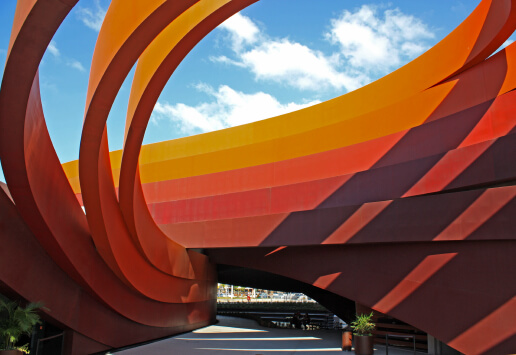Twice a year the Design Lab at Design Museum Holon hosts students and teachers from design academies in Israel for a semester of studying, experiencing, and joint thinking. From the beginning of November 2011, the Lab is hosting Shachar Geiger, Luka Or, and students from the IDHO-Interaction Design Hands On course at the Holon Institute of Technology (HIT) Interaction Lab for three months of activity and study in the Lab space.
Latest Blog Post: Lesson 13 – 24/01/2012
Final Lesson, Final PresentationsAfter thirteen exhilarating weeks of innumerable electric wires and video films, we’ve reached the end of the course and our final presentations. The best of our work from the past semester will be presented to the general public in an exhibition that will open on Wednesday, February 8, 2012, and continue for about a month at our Lab here at the Museum.
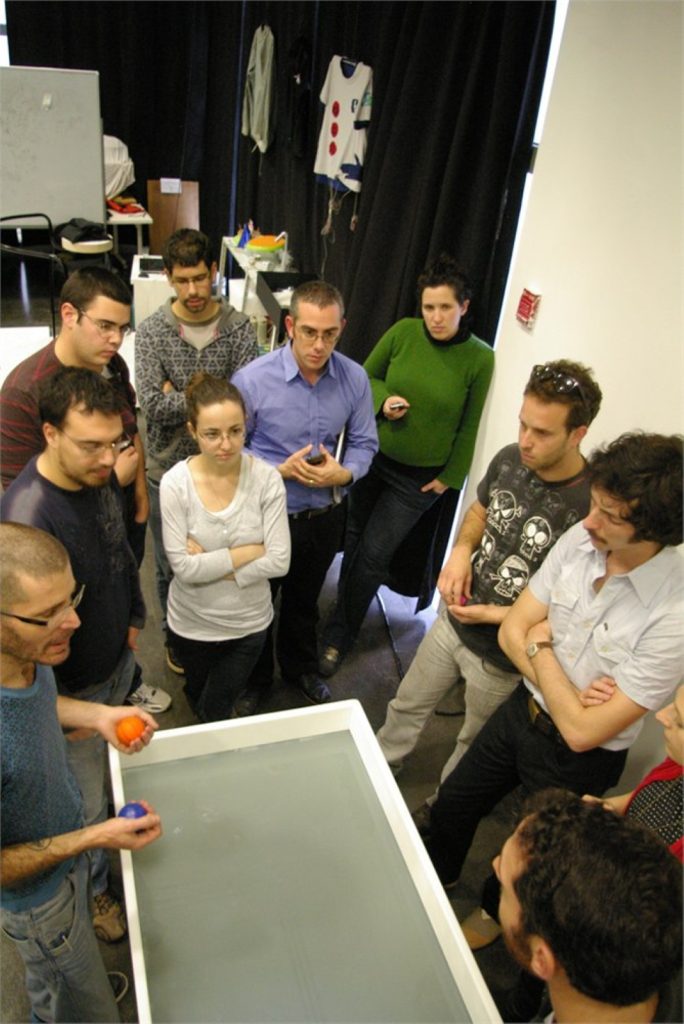
And The Moment We’ve All Been Waiting For: The Presentations. A reminder: the concept for our final project was a ball-inspired interaction. We began about five weeks ago when each group was asked to come up with five ideas for interactions associated with a ball, and demonstrate them by means of short video prototypes. Of the five, we chose three and built models of them to demonstrate the interactions. Of the three, each group chose one interaction to develop as a final project. Here are the results:
Dina Rubanovitch Even-Paz, Omer Ben-Naim, David Kantor – Spinning Head
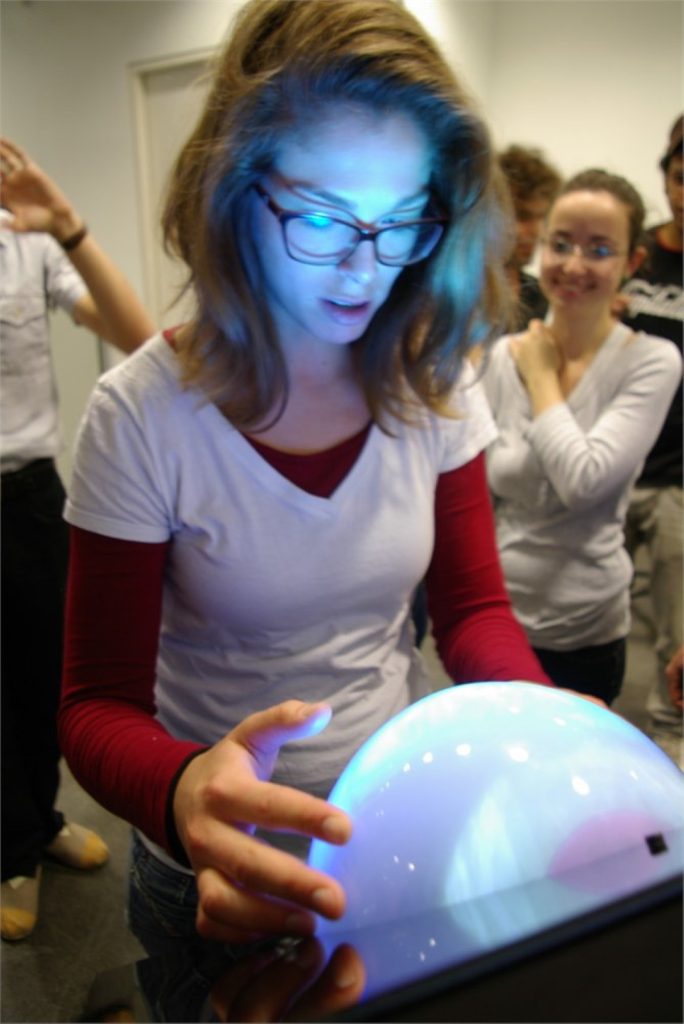
The polystyrene ball on a pivot from last week has been developed into a black stand with a lighted ball positioned on its upper diagonal surface. When the user draws near to the stand his face is identified by a camera and projected onto the inside of the ball. From the moment the user’s face has been identified it remains in the center of the ball, and turning the ball makes the face turn as well.
The ball from last week:
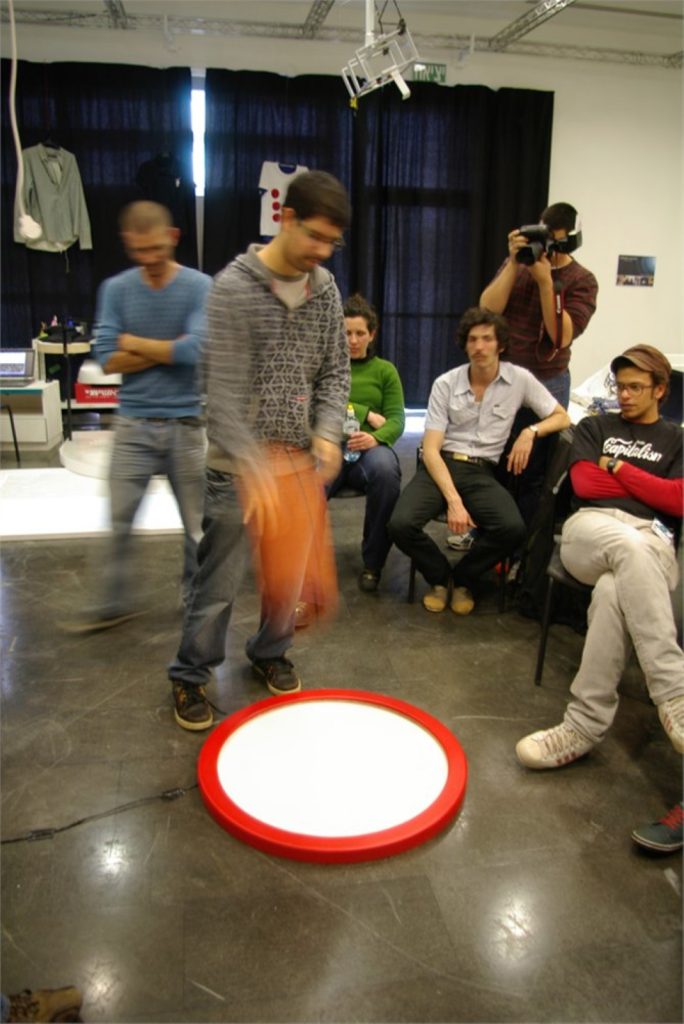
A circular surface designed for bouncing a basketball. When the user begins bouncing the ball, a musical rhythm is played. After a few seconds, lights light up around the surface, indicating to the user that he can add another segment to the music being played. Further bouncing determines the rhythm of the new sound that has been added. The lights switch off to indicate the end of the recording and light up again when it’s time to add additional notes to the music. In this way, the user creates music by means of the ball’s bouncing rhythm.

An elevated platform with a railing looks out over a horizontal screen on which a satellite photograph of Holon is projected. The size, position, and movements of the projected image create a sense of hovering for the user. Next to the platform there are black sandbags. When the user picks up a sandbag and increases his weight, the “basket” of the virtual hot air balloon in which he is standing begins to descend. Putting the sandbags back reduces the weight of the hot air balloon, and it begins to ascend.
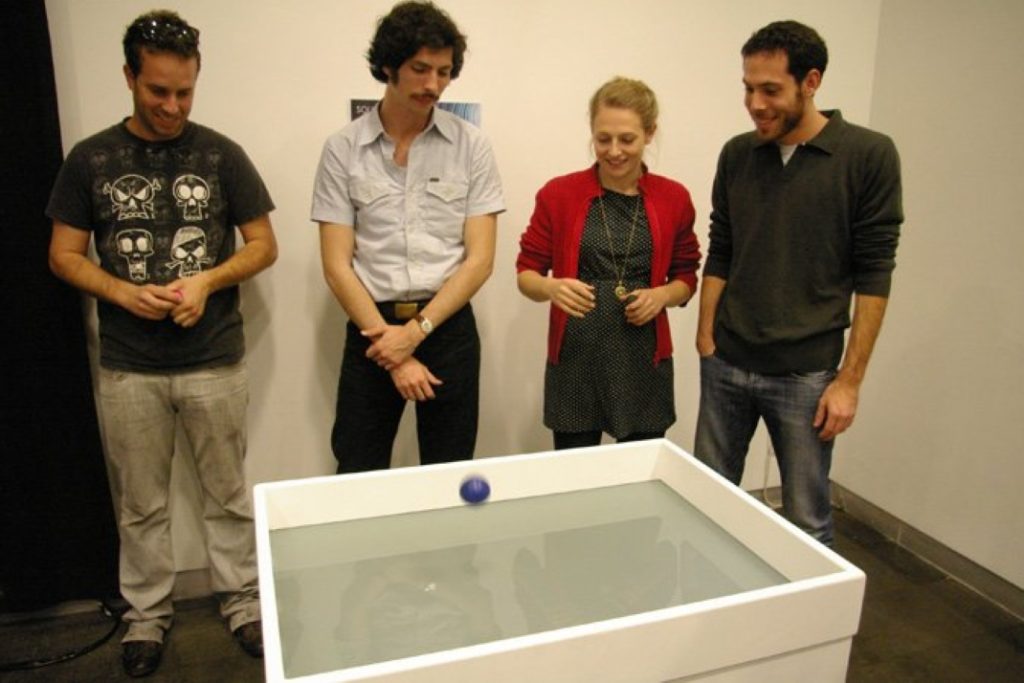
A table with a glass surface and elevated edges. Bouncing balls on the surface produce different notes according to the bouncing rhythm of the ball. Using different balls produces different rhythms and bouncing forms, thus creating interest in repeated bouncing and prolonged use of the interaction. The surface is filmed from below and divided into areas to which harmonious notes have been attached to prevent the uncontrolled bouncing creating grating sounds.
Now What?The course is over and preparations for the exhibition have begun. We’ve split into teams: construction, graphics, media, hosting, technology, and overall coordination. For the first time, the graduates exhibition will be held at the Museum and will run for a relatively long time. Consequently, organizing the space and the interaction projects has to be very meticulous, so we’ve got our work cut out for us. We hope you’ll all come to visit, to gain an impression, and most importantly – to experience.
You can stay in touch with the Interaction Lab through our website http://idho.org.il, where you can also subscribe to our newsletter and receive regular updates.
Archive
– Lesson 1
– Lesson 2
– Lesson 3
– Lesson 4
– Lesson 5
– Lesson 6
– Lesson 7
– Lesson 8
– Lesson 9
